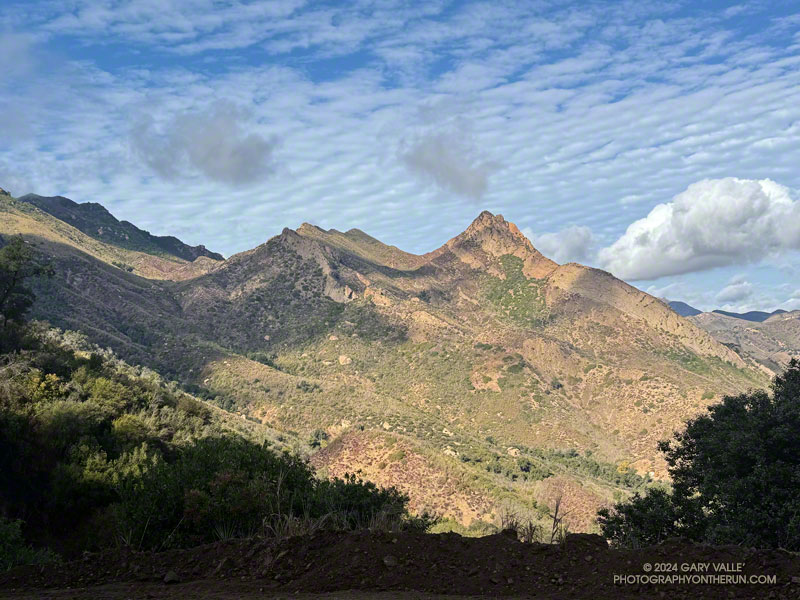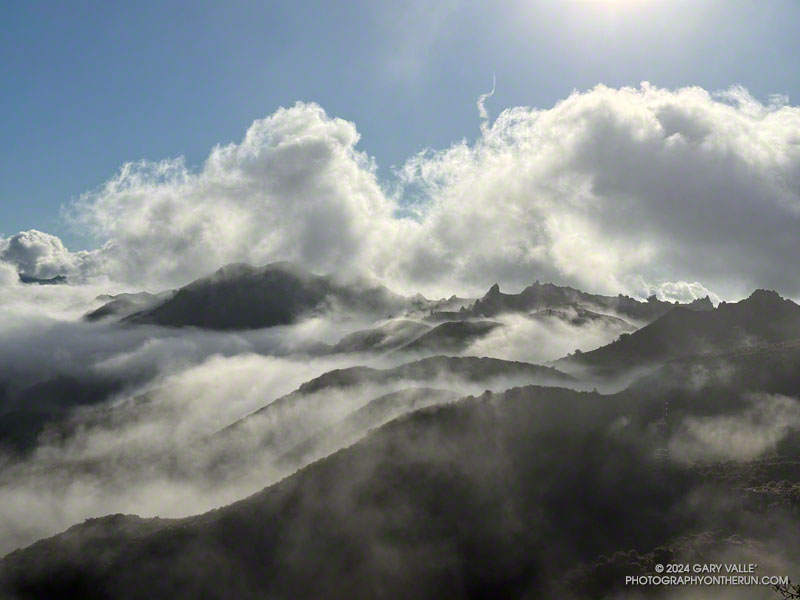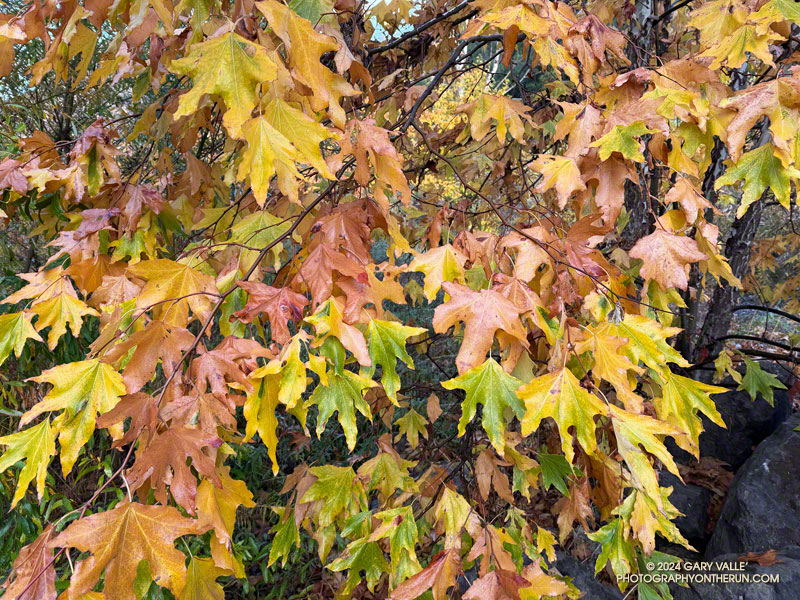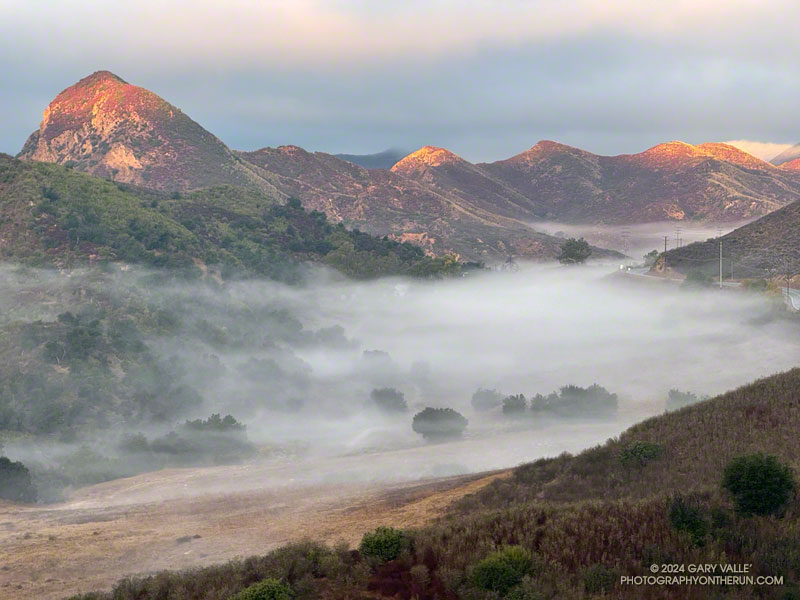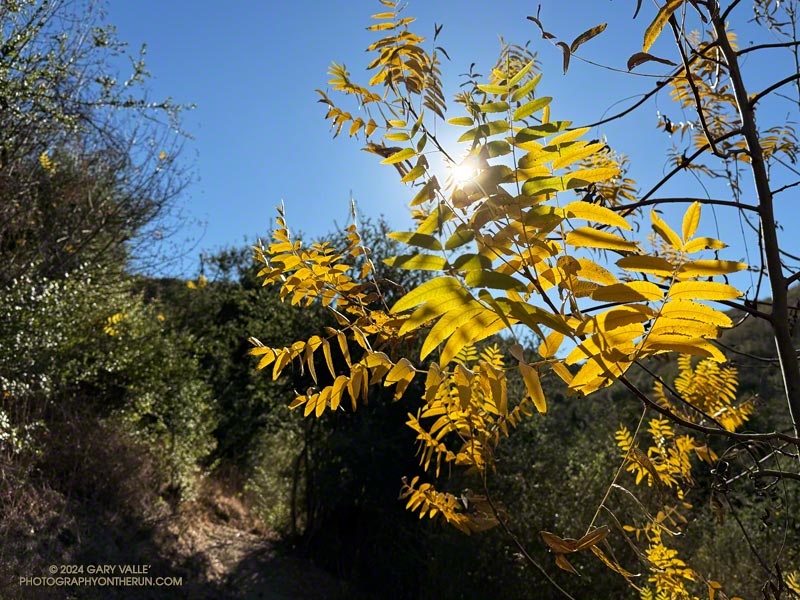
In a 2013 post, I suggested that the Cistern/Phantom Trailhead on Mulholland Highway might be the best trailhead to start the Bulldog Loop.
More than 10 years and a lot of trail running miles later, I still prefer to do the Bulldog Loop from that trailhead. More than that, most of the trail runs I do in Malibu Creek State Park are from the Cistern/Phantom Trailhead.
There are two key reasons — the scenery is spectacular and the route options endless. Over the past year, I’ve run from the Cistern/Phantom Trailhead a dozen times, on routes ranging from 2 to 23 miles.
Two of those runs were this March. One was on March 9. I’d done the Bulldog Loop several times recently, so the idea was to do a Bulldog-length run, without doing the Bulldog Loop. It was a “follow my nose” run that included Reagan Ranch, Malibou Lake overlook, Crags Road, Tapia Spur Trail, Grasslands Trail, Talepop Trail, Las Virgenes Trail, Liberty Canyon Trail, and Phantom Trail. It turned out to be about 17 miles, with an elevation gain/loss of about 2400′.
I enjoyed that run so much, I came back a week later and did a similar run. But this time the route included the Bulldog Loop. The idea was to use established trails and do the longest loop I could in Malibu Creek State Park, without repeating any part of the route. The run turned out to be about 23 miles, with around 4200′ gain/loss.
It was an outstanding run, with a delicate creek crossing, eye-catching halo, green hills, Spring wildflowers, and an unusual encounter with a Great Blue Heron (video).
Here’s an interactive, 3-D terrain view of the 23-mile loop in Malibu Creek State Park, and a few photos from the run.
Some related posts:
– Best Trailhead to Start the Bulldog Loop?
– Bulldog Loop Plus the Phantom Loop
– Reagan Ranch at Sunrise
– Wandering Around Malibu Creek State Park
– Spring Fever Running the Phantom Loop in Malibu Creek State Park
– Late Start on the Bulldog Loop

